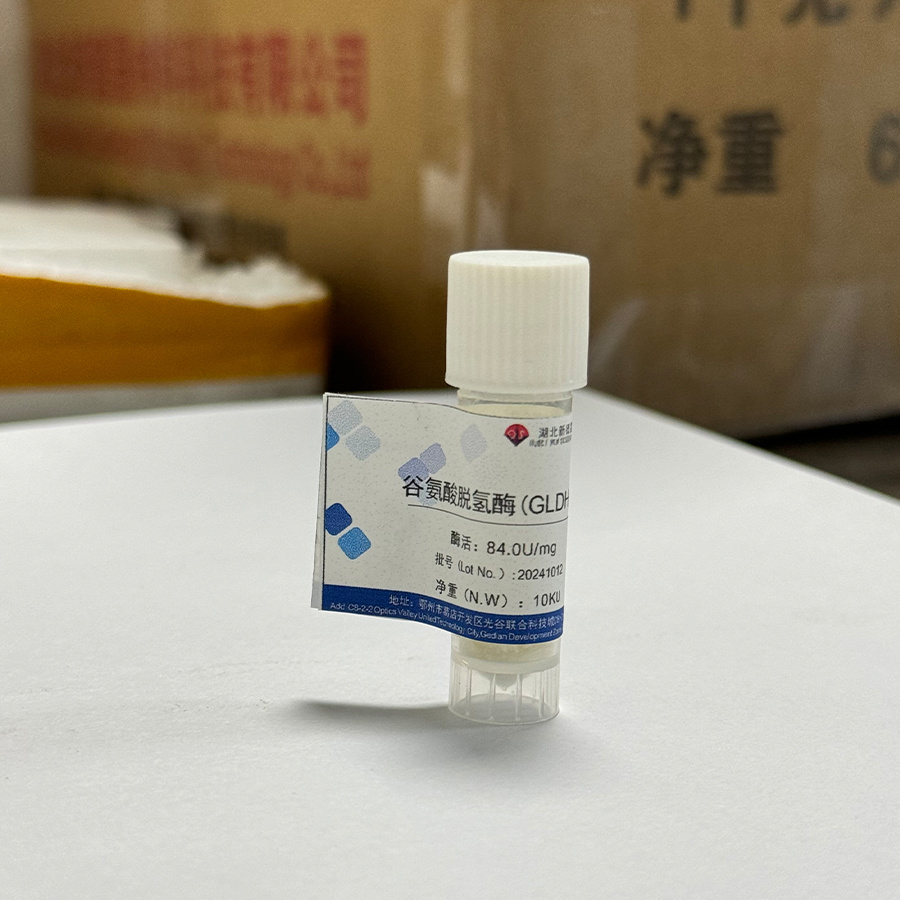Desheng New Materials tells you: Four key factors affecting enzyme activity
Release time:
2025-05-09
Enzymes, as the "magicians" of efficient catalytic reactions in living organisms, directly affect all aspects of life activities through their activity. However, the activity of enzymes is not constant and can be influenced by various factors. Today, Desheng New Materials will take you on a deep understanding of the four key factors that affect enzyme activity, helping you better use enzyme preparation products in production and research.

S-adenosyl-homocysteine hydrolase SAHH enzyme
Temperature: the "activity switch" of enzymes
Temperature is one of the factors that affect enzyme activity. Just as humans can live comfortably at an appropriate temperature, enzymes also have their own suitable reaction temperature. At the appropriate temperature, enzyme molecules move faster, the probability of collision with substrates increases, and the reaction rate is faster. However, temperatures that are too high or too low can have adverse effects on enzyme activity.
Low temperature: Enzyme molecules move slowly, reducing the chance of binding to substrates and decreasing the reaction rate.
Excessive temperature: The enzyme protein structure undergoes denaturation, the active center is damaged, and the enzyme activity is lost.
Therefore, in practical applications, we need to select the reaction temperature according to the type of enzyme and strictly control temperature fluctuations to ensure the stable performance of enzyme activity.
PH value: the "acid-base balance" of enzymes
The pH value, which is the acidity or alkalinity of a solution, is also an important factor affecting enzyme activity. Each enzyme has its own suitable pH value, at which the conformation and charge distribution of the enzyme protein are more conducive to substrate binding, resulting in a faster reaction rate.
The pH value deviates from its suitable range: the conformation of the enzyme protein changes, the charge distribution of the active center is affected, resulting in a decrease in the binding ability of the enzyme to the substrate and a decrease in the reaction rate.
Excessive or insufficient pH value: Enzyme proteins undergo irreversible denaturation, resulting in complete loss of activity.
Therefore, when using enzymes for reactions, we need to choose the appropriate pH value based on the type of enzyme and use a buffer solution to maintain the pH stability of the reaction system.
Salt concentration: the 'invisible killer' of enzymes
The effect of salt concentration on enzyme activity is often overlooked, but it is a significant factor that cannot be underestimated. Low concentration salt solution can enhance the stability of enzyme proteins and improve enzyme activity. However, high concentrations of salt solutions can interfere with the chemical bonds in enzyme molecules, disrupt their protein structure, and lead to a decrease in enzyme activity.
High salt concentration: Salt ions compete with enzyme proteins to bind water molecules, causing dehydration of enzyme proteins, structural changes, and reduced activity.
The salt concentration is very high: only a few types of enzymes can tolerate it, such as enzymes in halophilic bacteria.
Therefore, when using enzymes for reactions, we need to control the salt concentration in the reaction system to avoid excessive concentration of salt solution that can inhibit enzyme activity.
Enzyme inhibitors: the "natural enemies" of enzymes
Enzyme inhibitors refer to substances that can bind to enzyme molecules and reduce their activity. According to the way inhibitors bind to enzymes, they can be divided into reversible inhibitors and irreversible inhibitors.
Reversible inhibitor: Non covalently bound to enzyme molecules, can be removed by dilution, dialysis, and other methods to restore enzyme activity.
Irreversible inhibitor: covalently bound to enzyme molecules, cannot be removed by simple methods, resulting in loss of enzyme activity.

Desheng New Materials: A professional manufacturer of enzyme preparations
The above are the main factors that affect enzyme activity summarized by the editor. Desheng New Materials is a professional manufacturer of enzyme preparations, which can produce dozens of enzyme preparation products, including glutamate dehydrogenase, adenosine deaminase, S-adenosyl-homocysteine hydrolase SAHH enzyme and other products. The enzyme preparation products provided are mainly used as raw materials for reagent kit detection. Customers in need can call for detailed consultation.
Previous page
Previous page
Contact details
Contact number
Address: C8, Guanggu United Science and Technology City, Ezhou City, Hubei Province
Fax:0711-3704 589
Follow us



